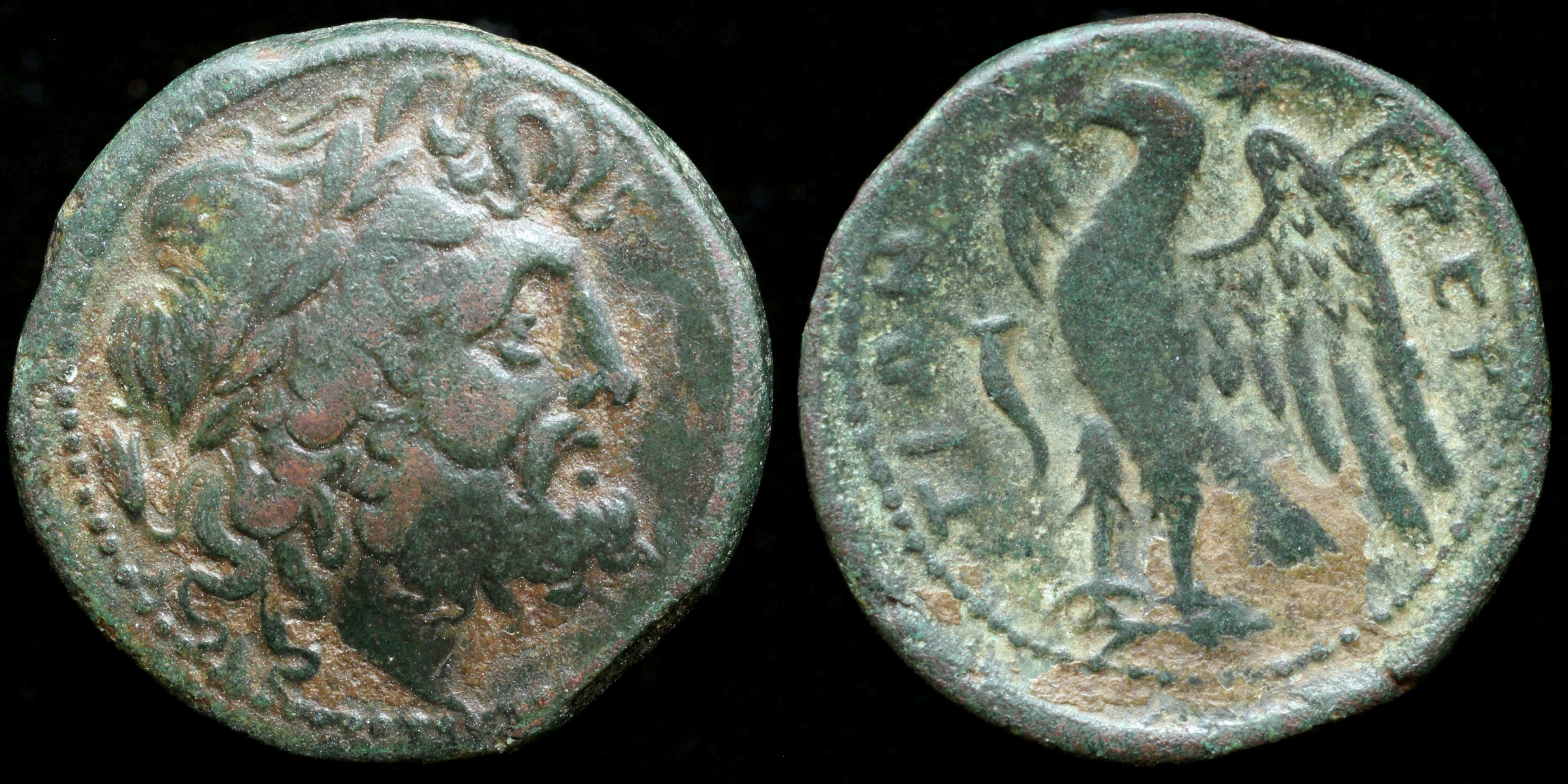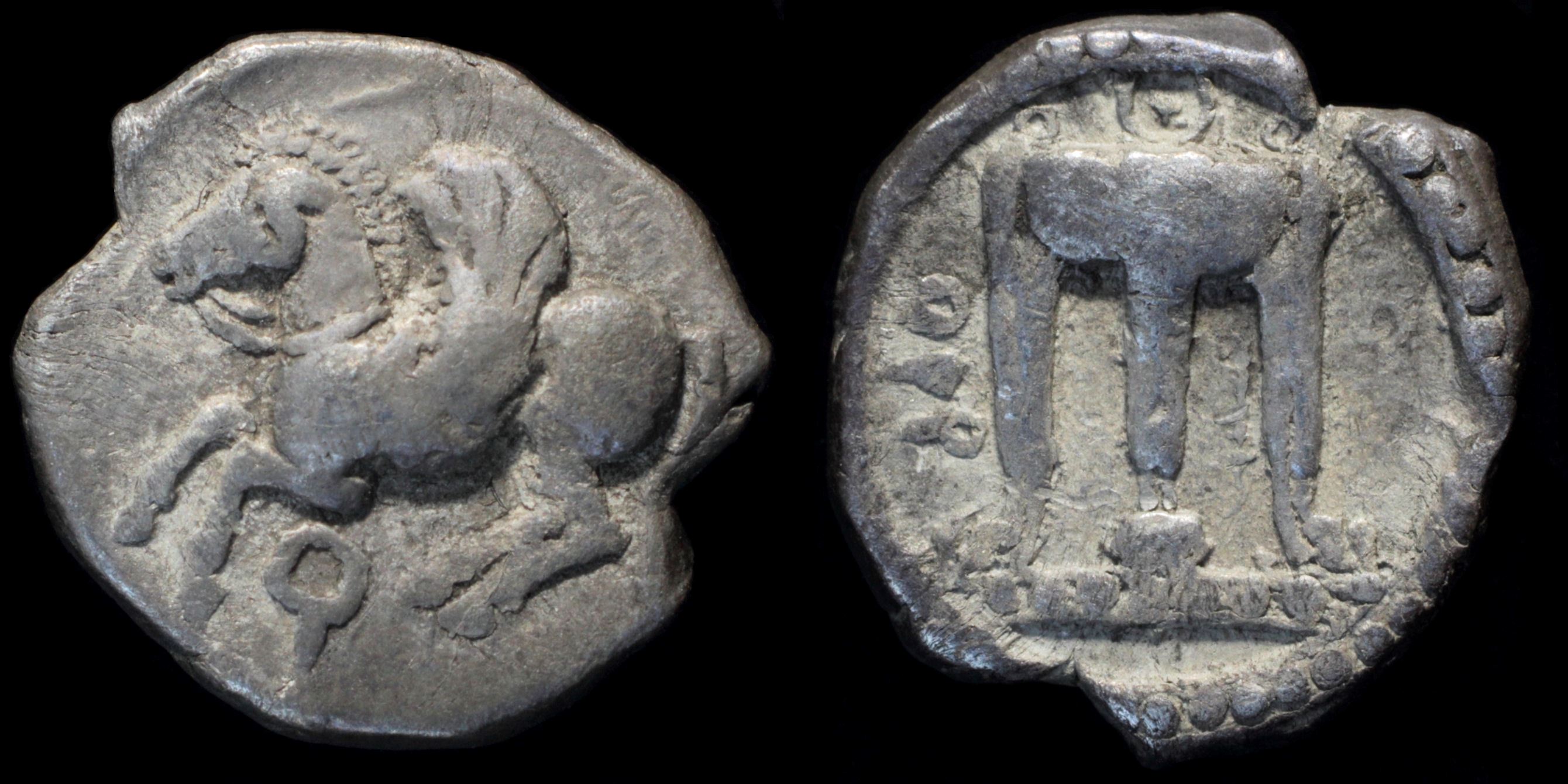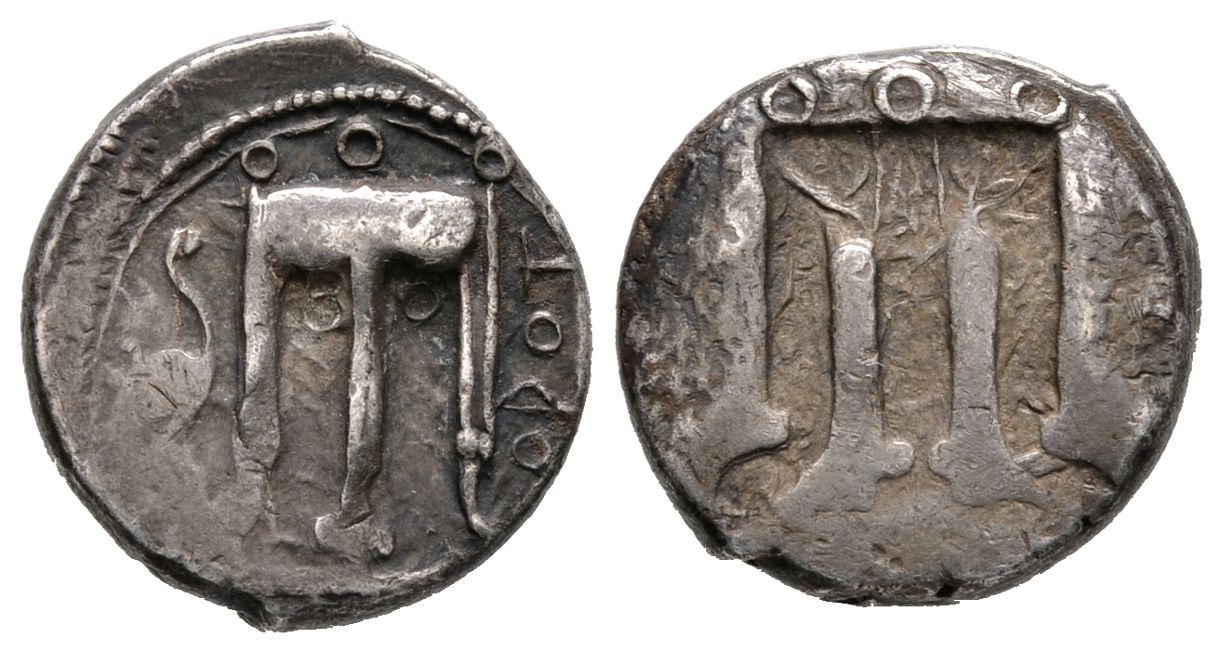Kroton, now Crotone, Italy, was an Achaean colony from c. 710 BC on the coast of the Gulf of Taranto.
Croton's founder was Myscellus who came from the city of Rhypes in Achaea in the northern Peloponnese. It soon became one of the most flourishing cities of Magna Graecia with a population between 50,000 and 80,000 around 500 BC.
Its inhabitants were famous for their physical strength and for the simple sobriety of their lives. From 588 BC onwards, Croton produced many generations of victors in the Olympics and the other Panhellenic Games, the most famous of whom was Milo of Croton.
In 194 BC, it became the site of a Roman colony. Little more is heard of it during the Republican and Imperial periods, though the action of one of the more significant surviving fragments of the Satyricon of Petronius is set in Croton.
Croton's founder was Myscellus who came from the city of Rhypes in Achaea in the northern Peloponnese. It soon became one of the most flourishing cities of Magna Graecia with a population between 50,000 and 80,000 around 500 BC.
Its inhabitants were famous for their physical strength and for the simple sobriety of their lives. From 588 BC onwards, Croton produced many generations of victors in the Olympics and the other Panhellenic Games, the most famous of whom was Milo of Croton.
In 194 BC, it became the site of a Roman colony. Little more is heard of it during the Republican and Imperial periods, though the action of one of the more significant surviving fragments of the Satyricon of Petronius is set in Croton.
Modern location: Crotone, Italy
(1)
Brettian League

Obverse: Laureate head of Zeus right, stalk of grain behind
Reverse: Eagle standing left on lightning, cornucopia right, star above; BPET_TIΩN
Diameter:
21.5 mm
Die Orientation: -
Weight: 7.3 g
Die Orientation: -
Weight: 7.3 g
No notes for this coin
SNG ANS 44; SNG Cop 1663; Pfeiler p. 22, 1; HN Italy 1942
(2)
Kroton

Obverse: Pegasos left; Ϙ
Reverse: Tripod with 3 ring handles and legs ending in lion’s paws; ϘPO
Diameter:
11 mm
Die Orientation: -
Weight: 1.5 g
Die Orientation: -
Weight: 1.5 g
Kroton had the rather curious practice of issuing fractions bearing reverse types taken from the coinage of other cities: such as, among others, the Pegasus of Corinth (complete with the letter koppa below), the hare of Messana and the octopus of Syracuse.
HN Italy 2127, SNG Cop 1788

